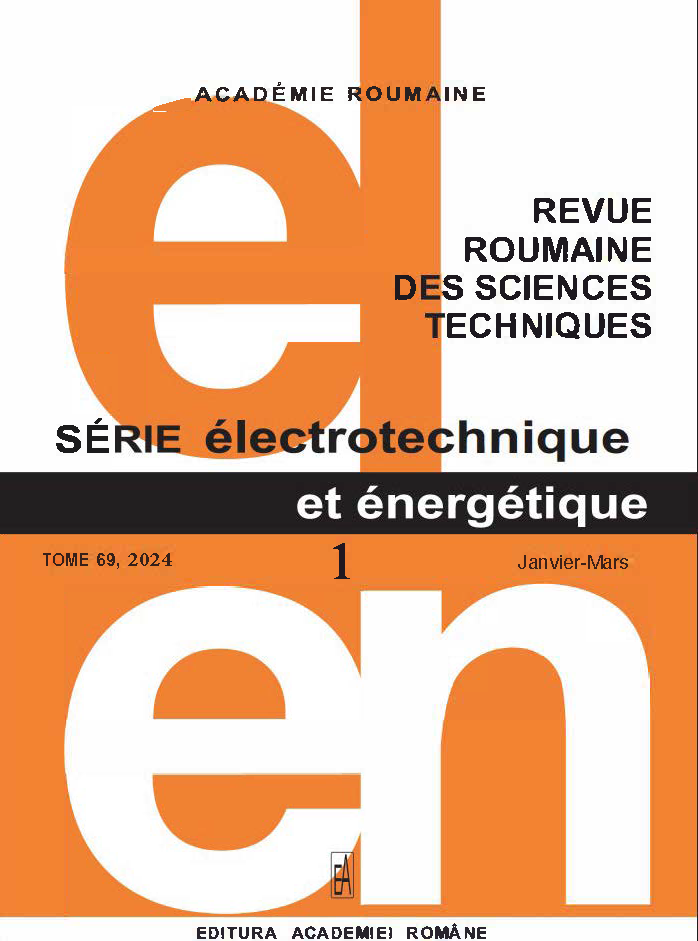INTEGRATION NEEDS AND CHALLENGES FOR GREEN AND SMART TRANSFORMATION OF PORT INDUSTRY BASED ON MULTI-SOURCE DATA
DOI:
https://doi.org/10.59277/RRST-EE.2024.1.13Keywords:
Port transformation, Sustainable development, Geographical analysis, Jiangsu provinceAbstract
This research explores the integration needs and challenges for achieving green and smart transformation in the port industry, leveraging multi-source data and geographic information technology. The study utilizes comprehensive data, including information from the National Enterprise Credit Information Publicity System, the National Catalogue Service for Geographic Information, and road network maps of Jiangsu Province in China. Geographical analysis methods, such as weighted kernel density estimation and standard deviation ellipse analysis, are employed to identify spatial distribution patterns and changes in the port and shipping service industry. The results indicate a spatial distribution pattern with weak expansion from the center, along the "northwest-southeast" direction. Challenges such as decentralized management and competition for interests hinder port integration for sustainable development. By understanding the spatial dynamics, policymakers can make informed decisions for a greener, smarter, and more efficient port sector.
References
(1) S. Chan, Inter-regional development in China: An assessment, Journal of Infrastructure, Policy and Development, 5, 1, pp.1270 (2021).
(2) Y. Zhang, J. Dai, B. Chen, K. Chen, Correlation between economic and industrial demand and scientific innovation: a case study of thermodynamics discipline statistics of National Natural Science Foundation of China, Journal of Thermal Analysis and Calorimetry, 144, 6, pp. 2347–2355 (2021).
(3) J. Li, S.C. Lee, An empirical analysis on the performance of the port logistics industry and cluster: a focus on Jiangsu coastal areas, Journal of International Trade & Commerce, 13, 5, pp. 67–91 (2017).
(4) Q. Yuan, X. Teng, S. Tu, B. Feng, Z. Wu, H. Xiao et al., Atmospheric fine particles in a typical coastal port of Yangtze River delta, Journal of Environmental Sciences, 98, pp. 62–70 (2020).
(5) L. Song, Addressing value conflicts for the new Maritime Silk Road: Sustainable and responsible cost–benefit analysis in the Port of Shanghai. Out of China: Responsible Port Innovation along the 21st Century Maritime Silk Road, pp. 181 (2021).
(6) R. Xu, L.C. Chou, W.H. Zhang, The effect of CO2 emissions and economic performance on hydrogen-based renewable production, 35th European Countries. International Journal of Hydrogen Energy, 44, 56, pp. 29418–29425 (2019).
(7) M. Chen, W.H. Zhang, Purchase intention for hydrogen automobile among Chinese citizens: The influence of environmental concern and perceived social value, International Journal of Hydrogen Energy, 46, 34, pp. 18000–18010 (2021).
(8) H.C. Lin, L.C. Chou, W.H. Zhang, Cross-Strait climate change and agricultural product loss, Environmental Science and Pollution Research, 27, 12, pp. 12908–12921 (2020).
(9) N. Nasrabadi, A. Dehnokhalaji, P. Korhonen, B. Lokman, J. Wallenius, Robustness of efficiency scores in data envelopment analysis with interval scale data, European Journal of Operational Research, 297, 3, pp. 1151–1161 (2022).
(10) Y. Bai, L. Chou, W. Zhang, Industrial innovation characteristics and spatial differentiation of smart grid technology in China based on patent mining, Journal of Energy Storage, 43, pp. 103289 (2021).
(11) W.H. Zhang, Q. Yuan, H. Cai, Unravelling urban governance challenges: Objective assessment and expert insights on livability in Longgang District, Shenzhen, Ecological Indicators, 155, pp.110989 (2023).
(12) D.A. Cerdeiro, A. Komaromi, Y. Liu, M. Saeed, World seaborne trade in real-time: a proof of concept for building AIS-based nowcasts from scratch (2020).
(13) Wu, L., Xu, Y., Wang, Q., Wang, F., & Xu, Z. Mapping global shipping density from AIS data, The Journal of Navigation, 70, 1, pp. 67–81 (2017).
(14) Y.Y. Chen, Spatio-temporal evolution and comparative analysis of port size distribution in Bohai Rim and Yangtze River Delta, master’s Thesis, Liaoning Normal University (2018).
(15) L. Chen, X. Yang, J. Wu, Breakthrough under transformation and regulation: Exploring the development of energy internet industry in Jiangsu Province, Rev. Roum. Sci. Techn. – Électrotechn. Et Énerg., 68, 2, pp. 164–169 (2023).
(16) D. Roy, M. Singh, Realization of a three-level neutral point clamped inverter using a novel region selection approach of bus clamping PWM for electric vehicle application, Rev. Roum. Sci. Techn. – Électrotechn. Et Énerg., 68, 2, pp. 139–145 (2023).
(17) S. Mahdab, A. Moualdia, Intelligent management of a hybrid system by fuzzy logic: Application to arc welding, Rev. Roum. Sci. Techn. – Électrotechn. Et Énerg., 67, 2, pp. 111–116 (2022).
(18) I.C. Radu, Architecture considerations for communities of smart objects, Rev. Roum. Sci. Techn. – Électrotechn. Et Énerg., 67, 3, pp. 337-341 (2022).
(19) L. Chou, J. Dai, X. Qian, A. Karimipour, X. Zheng, Achieving sustainable soil and water protection: The perspective of agricultural water price regulation on environmental protection, Agricultural Water Management, 245, pp. 106583. (2021).
(20) X. Liu, Y. Pan, W. Zhang, L. Ying, W. Huang, Achieve sustainable development of rivers with water resource management-economic model of river chief system in China, Science of The Total Environment, 708, pp. 134657 (2020).
Downloads
Published
Issue
Section
License
Copyright (c) 2024 REVUE ROUMAINE DES SCIENCES TECHNIQUES — SÉRIE ÉLECTROTECHNIQUE ET ÉNERGÉTIQUE

This work is licensed under a Creative Commons Attribution-NonCommercial-NoDerivatives 4.0 International License.


